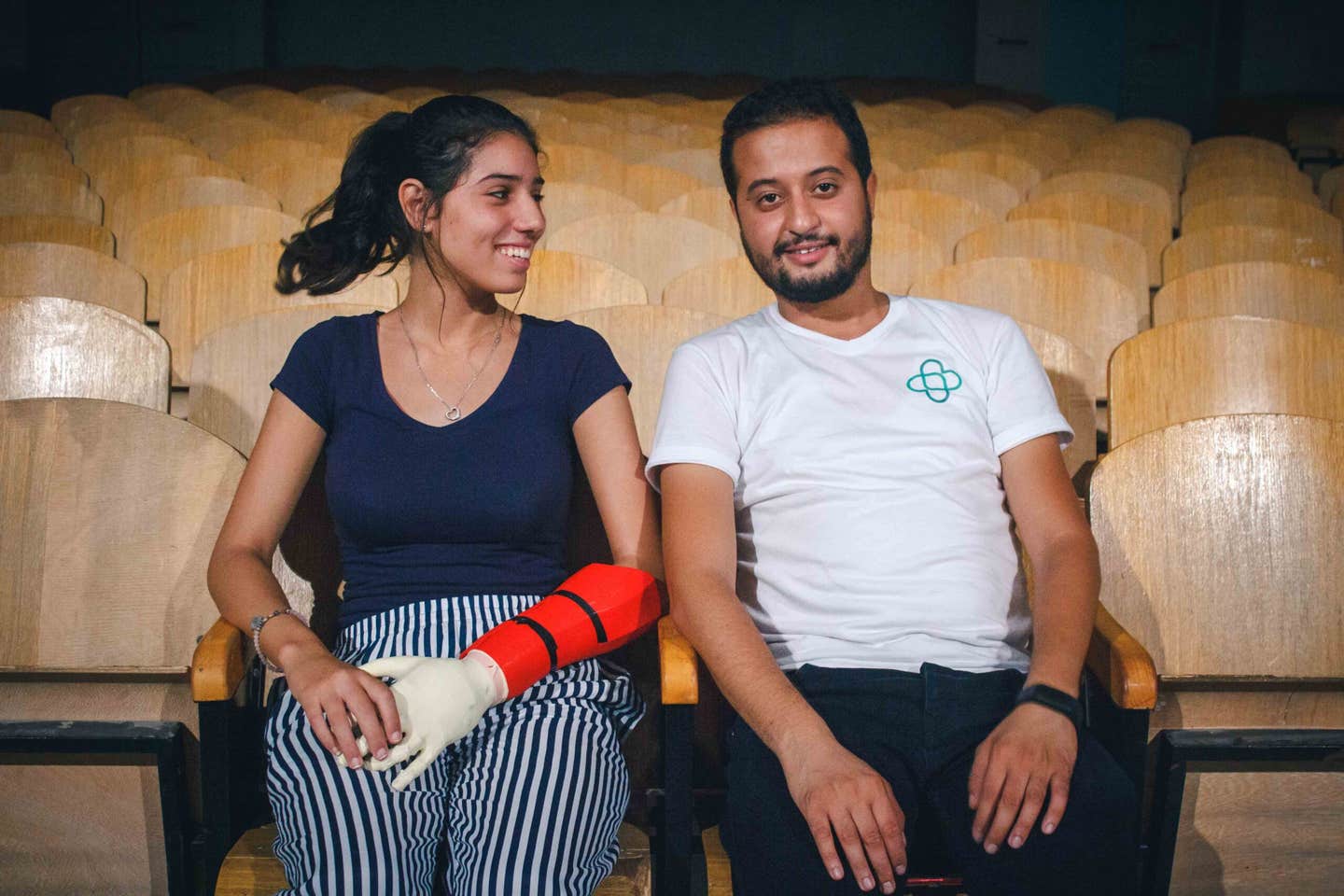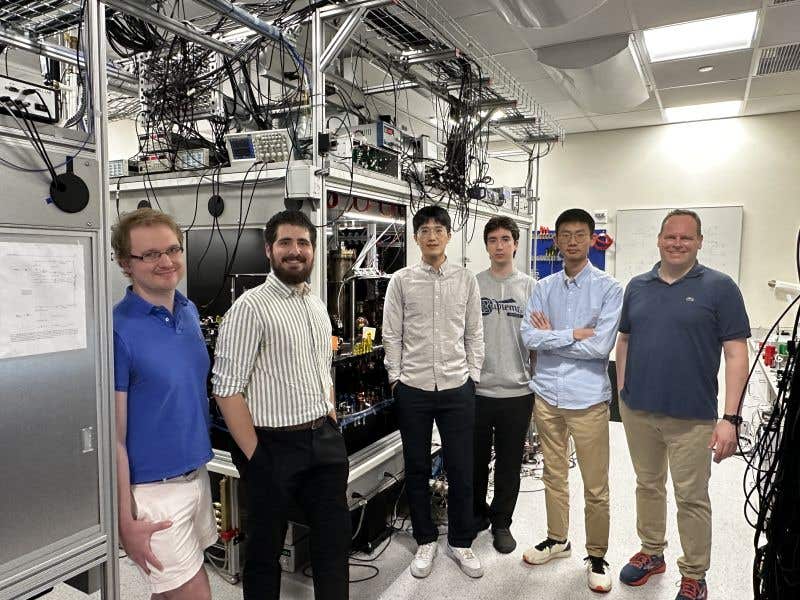Start-up’s new 3D-printed limbs: A game-changer in the field of prosthetics
Cure Bionic’s focus today – creating affordable, customized, and high-quality prosthetic limbs that can deliver a more fulfilling life.

[Mar. 6, 2023: JD Shavit, The Brighter Side of News]
Prosthetics are now more comfortable, more natural, and more functional than ever before. (CREDIT: Cure Bionics)
Prosthetic limbs are critical devices that help people with physical disabilities live a better life. With advances in technology, the field of prosthetics has witnessed a significant transformation in the last few decades. Prosthetics are now more comfortable, more natural, and more functional than ever before.
Cure Bionics is a company that has taken this transformation to a whole new level with its innovative 3D-printed prosthetic limbs. The company was founded by Mohamed Dhaouafi, an entrepreneur who started the company after learning that out of the approximately 30 million people who need prosthetics, only 1.5 million (or 5%) had the ability to obtain them.
"During my university education, I took part in a student challenge: Tunisia Entrepreneurship IHEC _ ENISO for business and engineering students. It required us to solve problems with innovative ideas that can be turned into businesses. One of my teammates had a cousin who was born without hands and whose parents were unable to afford prosthetics. My team chose to work on that idea. That was my first foray into the world of prosthetics," Dhaouafi said.
That vision lead to Cure Bionic's focus today - creating affordable, customized, and high-quality prosthetic limbs that can help people with physical disabilities live a more comfortable and fulfilling life.
Cure Bionics' Prosthetic Limbs
Cure Bionics' prosthetic limbs are designed to be affordable, customizable, and functional. The company uses 3D printing technology to create customized prosthetic limbs that are tailored to the specific needs of each individual.
The limbs are made from lightweight and high-strength materials that provide excellent functionality and durability and are designed to fit comfortably and securely while providing a wide range of movements that mimic the natural movements of the human body.
Related Stories
The prosthetic limbs are made using a combination of 3D scanning and 3D printing technology. The process begins with a 3D scan of the residual limb, which is then used to create a digital model of the prosthetic limb. The digital model is then used to create a physical prototype of the prosthetic limb using 3D printing technology.
The prosthetic limb is designed to be modular, which means that different components can be easily interchanged depending on the specific needs of the user. This modularity allows the user to customize the prosthetic limb based on their specific needs, such as the level of activity, comfort, and functionality.
The company's prosthetic limbs come with a wide range of features, including multi-grip control, adjustable wrist rotation, and finger flexion. They are also designed to be waterproof and dustproof, which makes them suitable for use in various weather conditions.
Mohamed Dhaouafi and an early recipient of the Hannibal arm. (CREDIT: Cure Bionics)
One of the most significant advantages of Cure Bionics' prosthetic limbs is their affordability. The company's prosthetic limbs are significantly cheaper than traditional prosthetic limbs, which can cost thousands of dollars, making them accessible to a broader range of people.
The company's commitment to affordability and customization has made prosthetic limbs more accessible to people with physical disabilities in developing countries. The company's prosthetic limbs have been used by people in various countries, including Egypt, India, and Mexico.
Cure Bionics' impact on the field of prosthetics extends beyond affordability and accessibility. The company's prosthetic limbs are also challenging the traditional design of prosthetic limbs, which have been modeled after the human body for decades. Cure Bionics' prosthetic limbs are designed to be modular, which means that they can be easily modified and customized.
The modularity of the prosthetic limbs allows for greater flexibility and adaptability, which is essential for people with physical disabilities who have different needs depending on their level of activity, environment, and other factors. The company's prosthetic limbs also challenge the traditional notion of what a prosthetic limb should look like. The company's prosthetic limbs are available in a range of colors and designs, which allows users to express their personality and individuality.
Cure Bionics' Future Plans
Cure Bionics has ambitious plans for the future. The company's goal is to continue to innovate and improve its prosthetic limbs to make them even more affordable, customizable, and functional.
Next generation version of the Hannibal Arm. (CREDIT: Cure Bionics)
The company plans to expand its reach by partnering with local organizations and governments in developing countries to make its prosthetic limbs more accessible to people with physical disabilities.
Cure Bionics also plans to continue to innovate its prosthetic limbs by incorporating new technologies, such as artificial intelligence and machine learning, into its prosthetic limbs. The company is exploring the use of sensors and microprocessors to provide even greater functionality and control to the prosthetic limbs.
Additionally, Cure Bionics is working on developing a remote monitoring system that will allow healthcare professionals to remotely monitor and adjust the settings of the prosthetic limbs. This system will enable healthcare professionals to provide better support to users of the prosthetic limbs, especially those in remote or rural areas.
Cure Bionics is also exploring the use of virtual reality and augmented reality technology to improve the design and functionality of its prosthetic limbs. The use of virtual reality and augmented reality will allow users to test and customize their prosthetic limbs in a virtual environment, which will help to improve the fit and functionality of the prosthetic limbs.
Cure Bionics is committed to pushing the boundaries of what is possible in the field of prosthetics. The company's focus on affordability, customization, and functionality is transforming the field of prosthetics, making prosthetic limbs more accessible and user-friendly.
Note: Materials provided above by The Brighter Side of News. Content may be edited for style and length.
Like these kind of feel good stories? Get the Brighter Side of News' newsletter.



